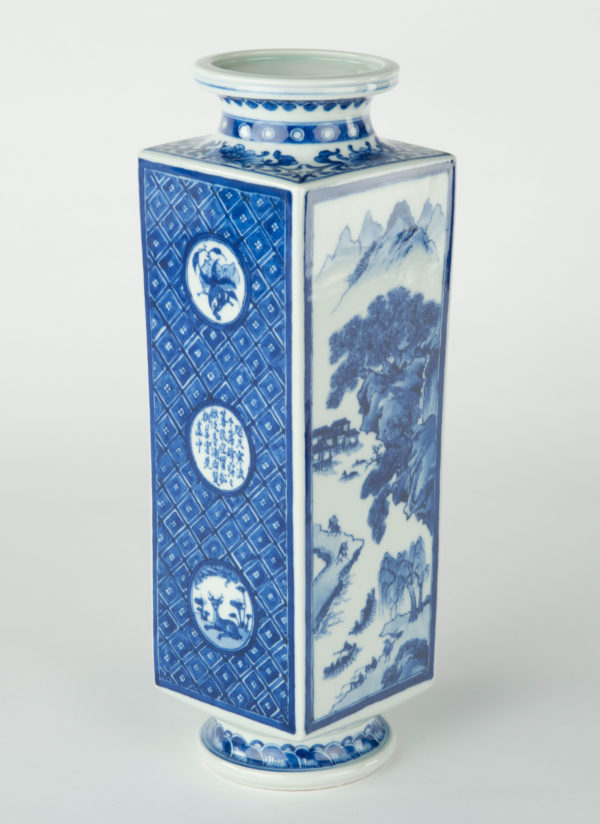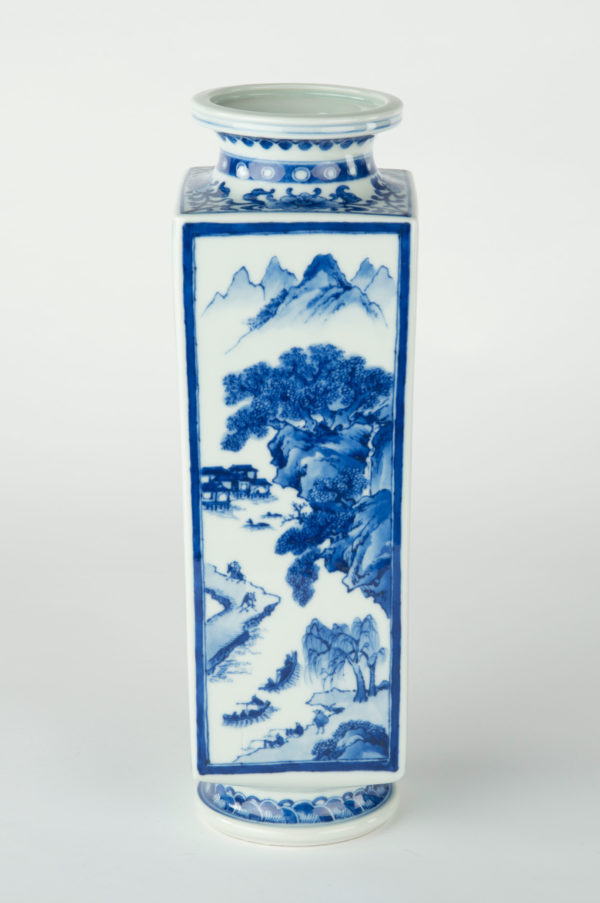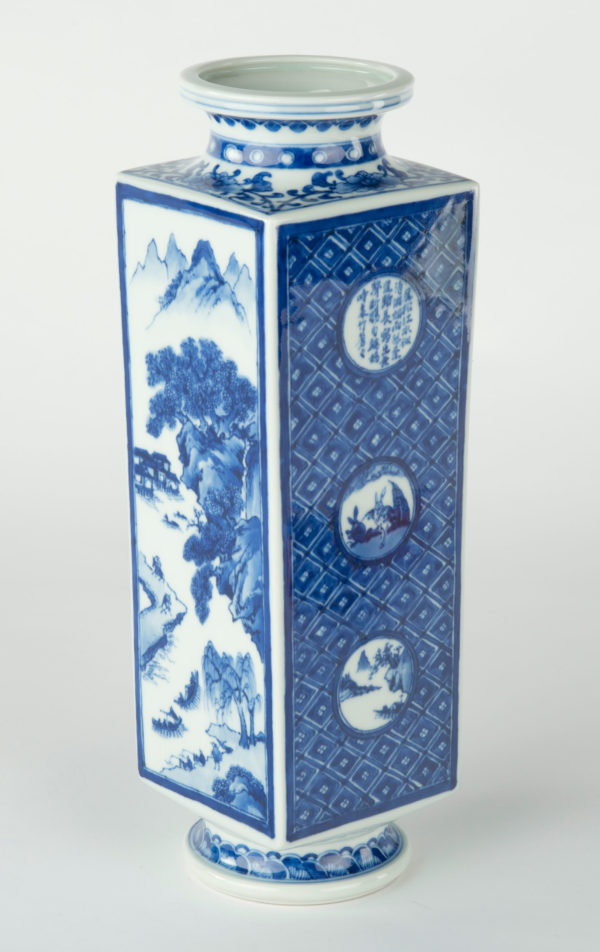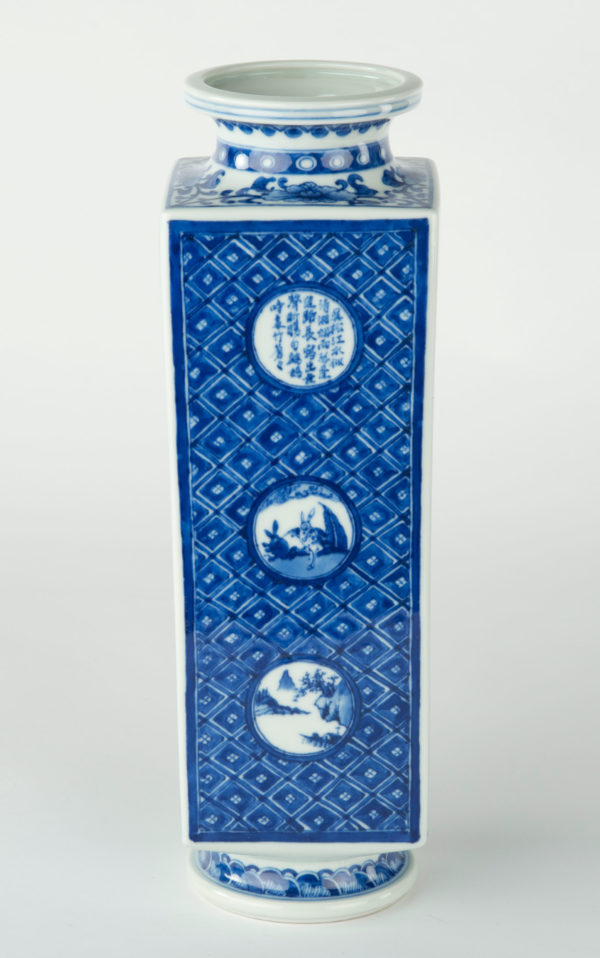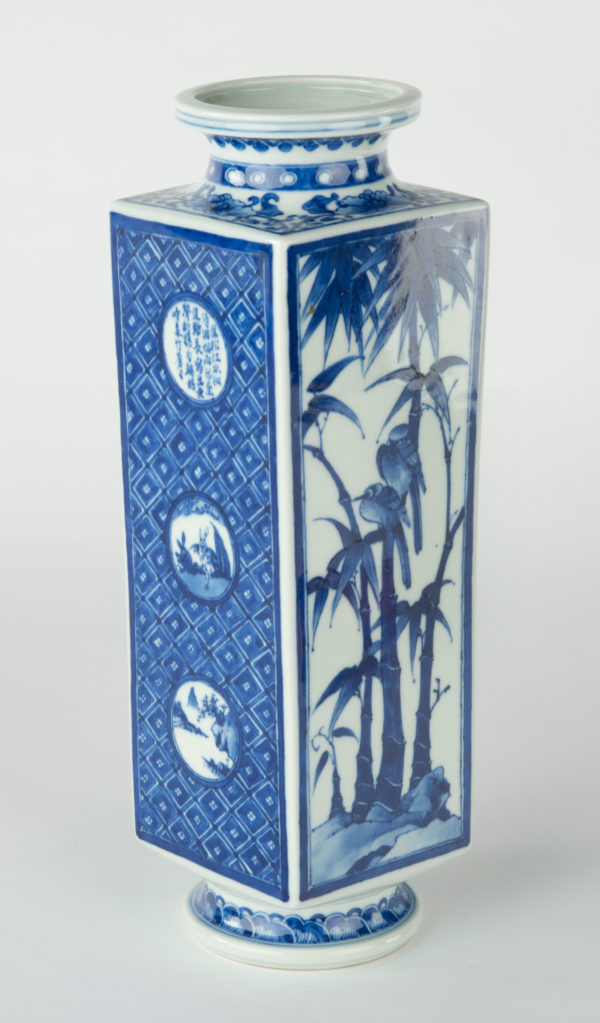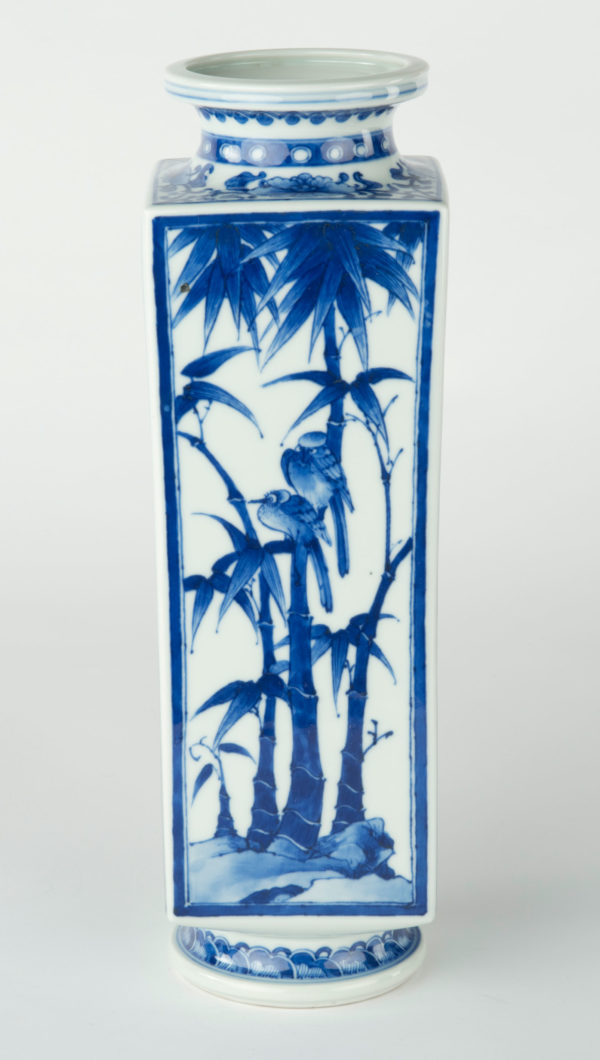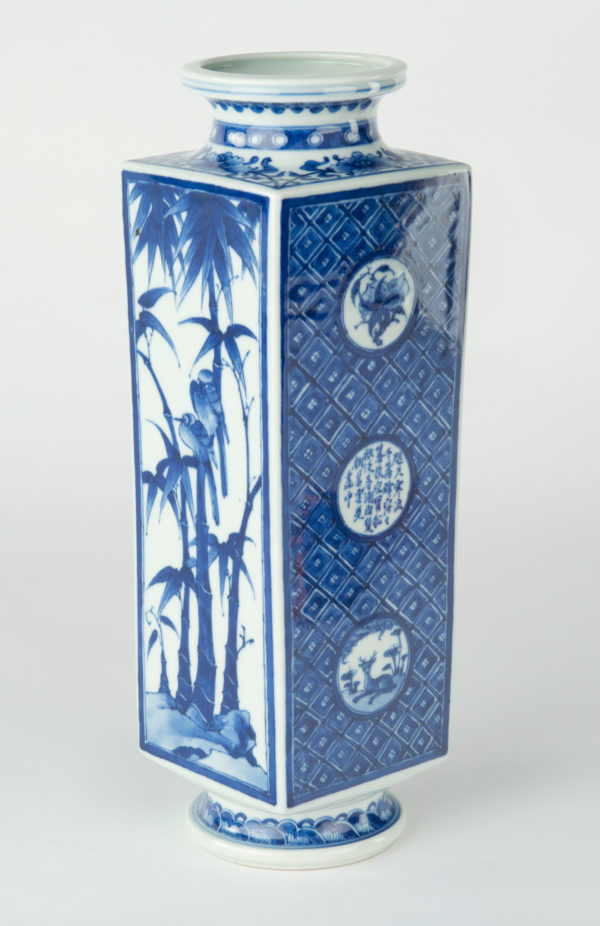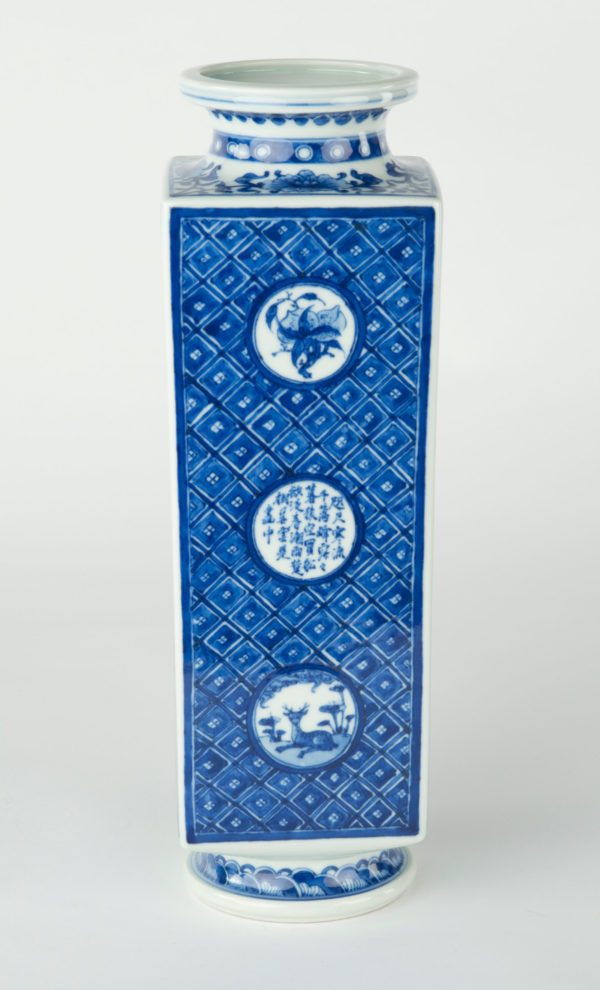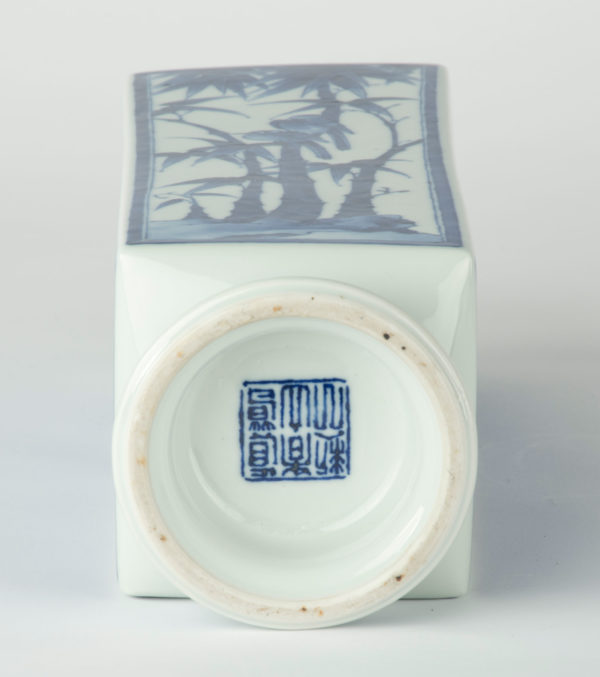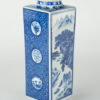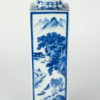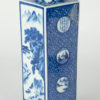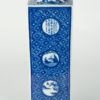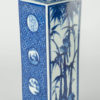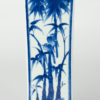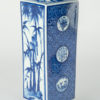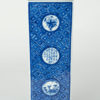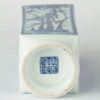As part of our Japanese works of art collection we are delighted to offer this tapering square form Meiji Period 1868-1912 , ceramic vase from the studios of the highly coveted Imperial artist Miyagawa Makuzu Kozan 1842-1916 , on this occasion Kozan has drawn his inspiration to form this large scale vase in a shape and with a style more synonymous of Chinese 17th century ceramics. The complex square form cong shaped vase is first brilliantly potted, then painstakingly painted in deep cobalt blue in a style and pattern generally referred to in Chinese ceramics as master of the rocks. The main opposing tapered oblong panels decorated with birds upon bamboo and boats upon a river beneath a mountainous backdrop, the conforming side panels painted in a geometric pattern with roundels depicting deer, flora, landscapes and calligraphy, the delicate foot rim has been decorated with a band of overlapping waves with the neck and shoulders decorated in formal bands and stylised flora, the underside nicely signed with the seal that translates to Makuzu Gama Kozan Sei and works from the 1900’s period of production.
Literature : Miyagawa (Makuzu) Kozan (1842–1916) was a Japanese ceramist and was one of the major potters of the Meiji Period, his kilns were based in Yokohama and he went on to win many prizes and gold medals at the various expositions , eventually receiving the recognition his works deserved in 1896 by becoming one of only a handful of Imperial artists (Teishitsu gigeiin), many of his works can be found in the worlds leading collections and museums.
Provenance :
Direct from a USA collection.
Condition Report :
Fantastic condition throughout.
Approximate Sizes :
Height : 13 3/4″ 35 cm
Depth : 4 1/4″ 11 cm
Width : 4 1/4″ 11 cm
Free worldwide delivery and a certificate of authenticity are included within the price of these items. EP75
